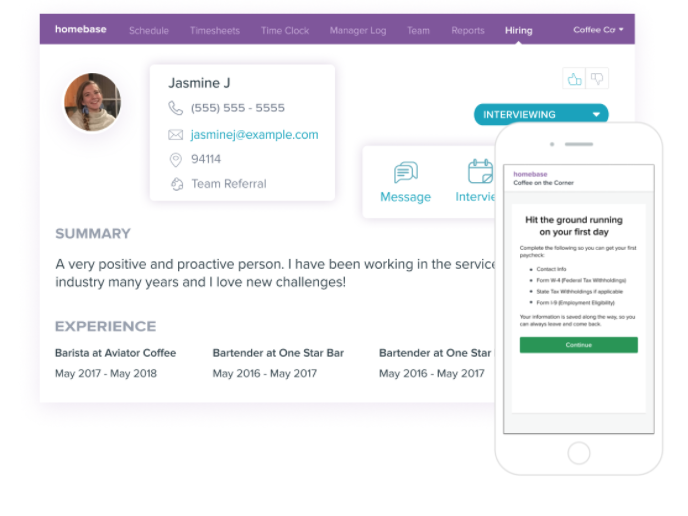4 steps to a successful onboarding process
- After you hire top talent to join your team, it is important for your new hire to undergo an effective onboarding process.
- Onboarding programs should begin right after you send over the job offer, and necessary documents should be signed even before your new employee’s first day.
- Homebase’s onboarding software sends a new hire packet to your employee. Since they will have already signed the forms, they can have more time to learn about their day-to-day job when they walk through the door.
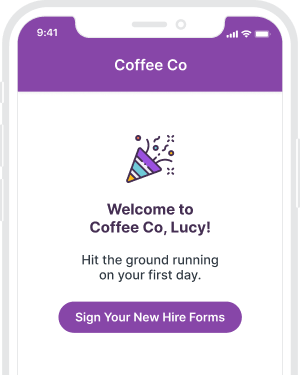
Establish an employee orientation process
Before hiring anyone, running through applicant screening and background checks, there should be a clear, concise employee onboarding process in place. Compile a written manual with actionable steps for a general approach to onboarding every employee, regardless of any potential unique handling an employee might require.
The best way to establish an onboarding process is to set up a checklist. The list should include administrative tasks such as setting up a company email address and gathering personal information. It should also include follow-up plans such as adding check-in meetings for a week and month in advance.
Here is an example of what your checklist may look like:
- Complete employee paperwork, including personal information like phone number and address
- Lock down goals and projects of role with supervisor and provide detailed responsibilities to employee
- Prepare employee workstation and give access to tools, email addresses, and more
- Assign required reading, such as employee handbook, training manuals, and benefits package
- Welcome to the team with tour of workplace and introduce them to company culture
- Assign training material and lay out expectations
- Give first project or task, explain expectations for the month
- Set up check-in meetings and discuss long-term goals
- Encourage social interaction among coworkers
Homebase’s employee onboarding software can help with several of these checklist items. For example, we’ll send your new hire the legally required documents they need to sign before their first day. Then, we’ll securely store them in our cloud. This way the boring paperwork is out of the way and you can focus on introducing them to the team and demonstrating your company culture.
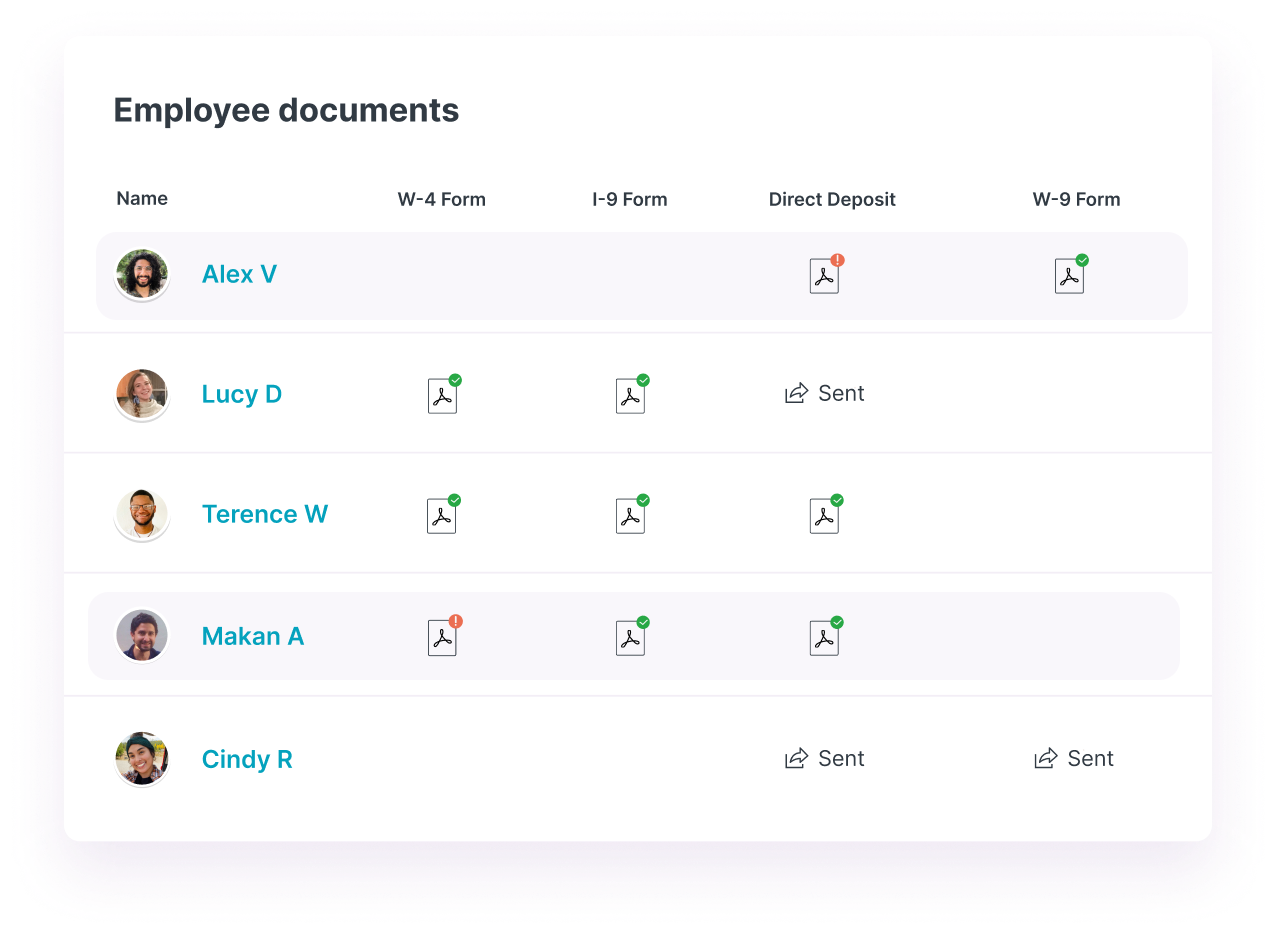
Make your employee feel welcome
Your new employee should be welcomed by your entire team and treated as an essential and exciting edition, regardless of the role he or she is fulfilling. The most important part of making an employee feel welcome is to make them feel valued, comfortable, and included. Keep it light, keep it friendly, and remember that onboarding is all about human interaction.
Prepare your new hire
Before the first day, include a welcome letter in the new hire packet that Homebase sends them with all of the necessary information to make them feel prepared. Lay out the working hours, acceptable dress code, and schedule.
Providing the details before the first day can help reduce first day jitters because they won’t be burdened with the nervousness of asking too many questions. You should also send benefit documents and forms in advance so the employee can review and complete any necessary steps before they start the job.
This way you can reduce the amount of time taken up with paperwork on the first day. With more time cleared up, you can set up short meetings with anyone the new hire will be working with so they can get acquainted and learn more about your small business and their role.
And don’t worry, Homebase will store these signed documents so you can always stay compliant with the US Department of Labor. You don’t need to hire HR professionals or an HR team to manage them for you.
Introduce your team
Put names to faces instead of simply providing an organizational chart with names printed on it. Whether you introduce your new hire to each employee individually or even just give photos to help the new hire learn each person, adding a visual aspect to a list of employees will reduce your new hire’s anxiety about meeting new people and approaching them for help.
While your onboarding process should be laid out beforehand, each employee is different and you should avoid making your new hire feel like there’s a lack of connection.
Tailor your approach to each employee, and give mentors the rundown on the new hire’s previous experience and other details so they can figure out the best way to communicate with them.
Then, encourage your team to communicate with your new hire through Homebase’s communication feature. Your team can send messages individually or as a group to encourage your new employee that they’re doing well so far, or offer advice on how to adapt.
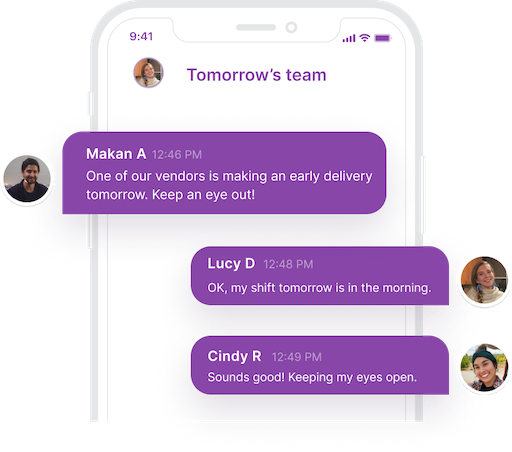
Barzotto
Marko Sotto
Owner at Barzotto

Lay out the rules
Now that your new hire is somewhat acquainted with the culture of your business and the team members he or she will be working with, it’s time to inform—without overwhelming—the employee on the procedures and policies that are crucial to your business.
Review the employee handbook
As mentioned before, it’s best practice to send the new hire your employee handbook before their first day. However, it’s a good idea to highlight some important aspects, including benefits, and organizational charts.
Review policies
Make sure your employee knows all of the policies they’re expected to follow, such as time and attendance, vacation days, personal conduct, and more. This is another good place for your new hire’s mentor. Have them go over the most important sections and provide examples on how they fit in with the workplace.
Leave time for questions
It’s easy to get overwhelmed when presented with an onslaught of rules and regulations. Break up the policy and process explanations and give the employee a few moments to clarify and ask questions about each segment. This way they’ll retain the information better and have a clearer understanding of what’s expected of them.
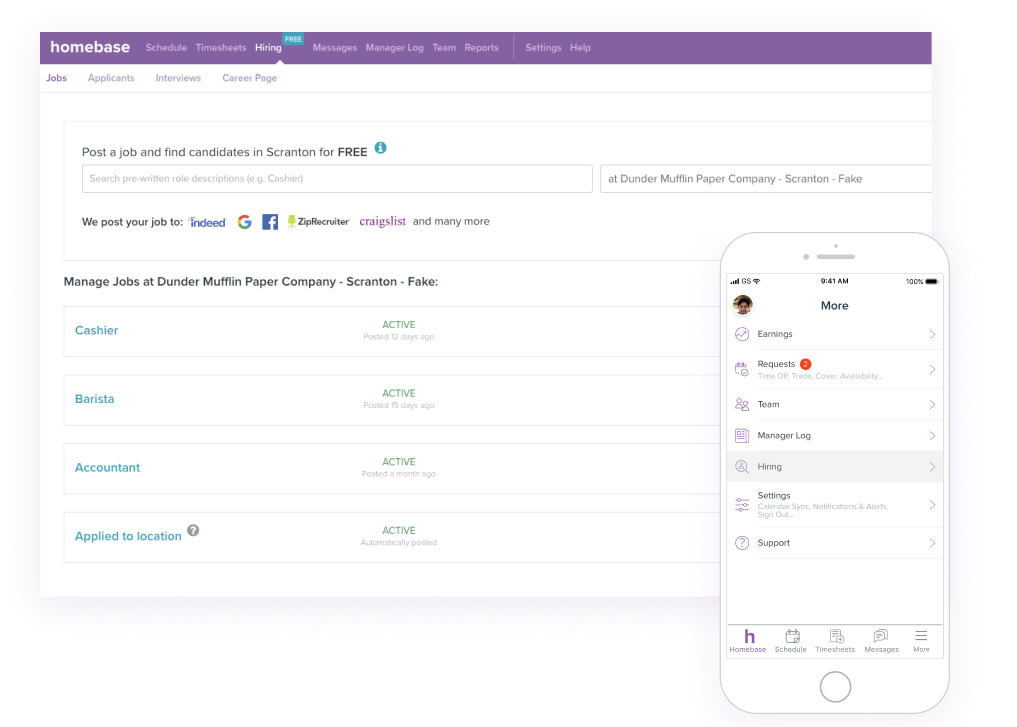
Ask for feedback
Feedback is an important step in your onboarding process as it helps you improve any areas in which your process is lacking from an employee’s perspective.
After your new hire has been on the job for about three months, collect feedback from him or her on how the process went. What worked? What did not work? As you review your onboarding experience, take a good look at the feedback you received and consider making changes where needed.
You can do this through Homebases’s messaging feature as well. Ask them to send you a few thoughts through the app so that it isn’t as uncomfortable to talk about it in person. Remember to listen and take in what they say and think about incorporating some of their suggestions into the next onboarding round.
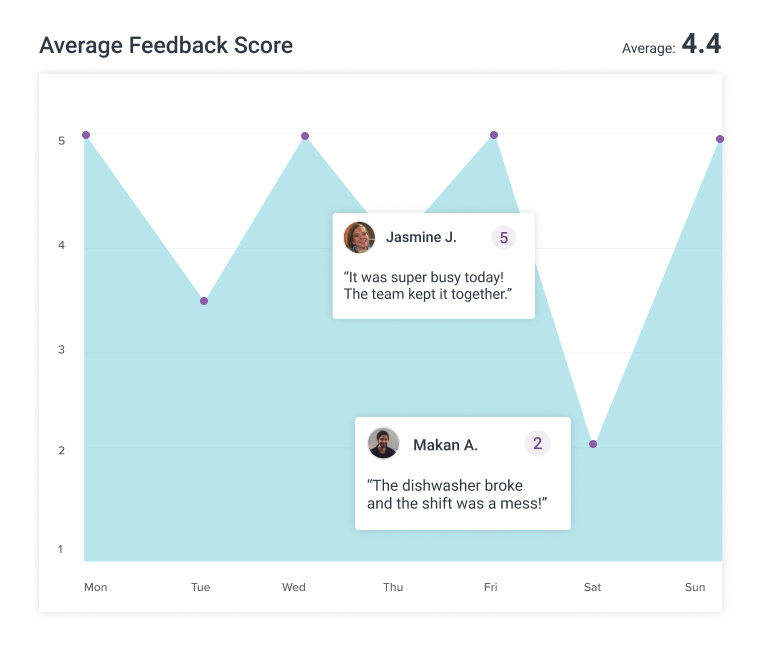
Why is my onboarding process important?
When hiring a team, it’s important to select the perfect candidate for your business. However, it’s almost equally as important for that newly hired candidate to get a great first impression. Your onboarding process is what will make or break your connection with that employee.
Onboarding is a big deal when it comes to employee satisfaction and retention. In fact, a recent survey found that 79% of managers think it should be a top priority to successfully assimilate new hires into the company culture.
Furthermore, 69% of employees are more likely to stay with a business for three years if they felt they had a great onboarding experience, according to another study.
Homebase is here to not only help you hire, but also onboard new employees with an easy and seamless process. Taking these initial steps to form a productive and positive relationship with the new team member will increase employee engagement and make your business run smoother.
